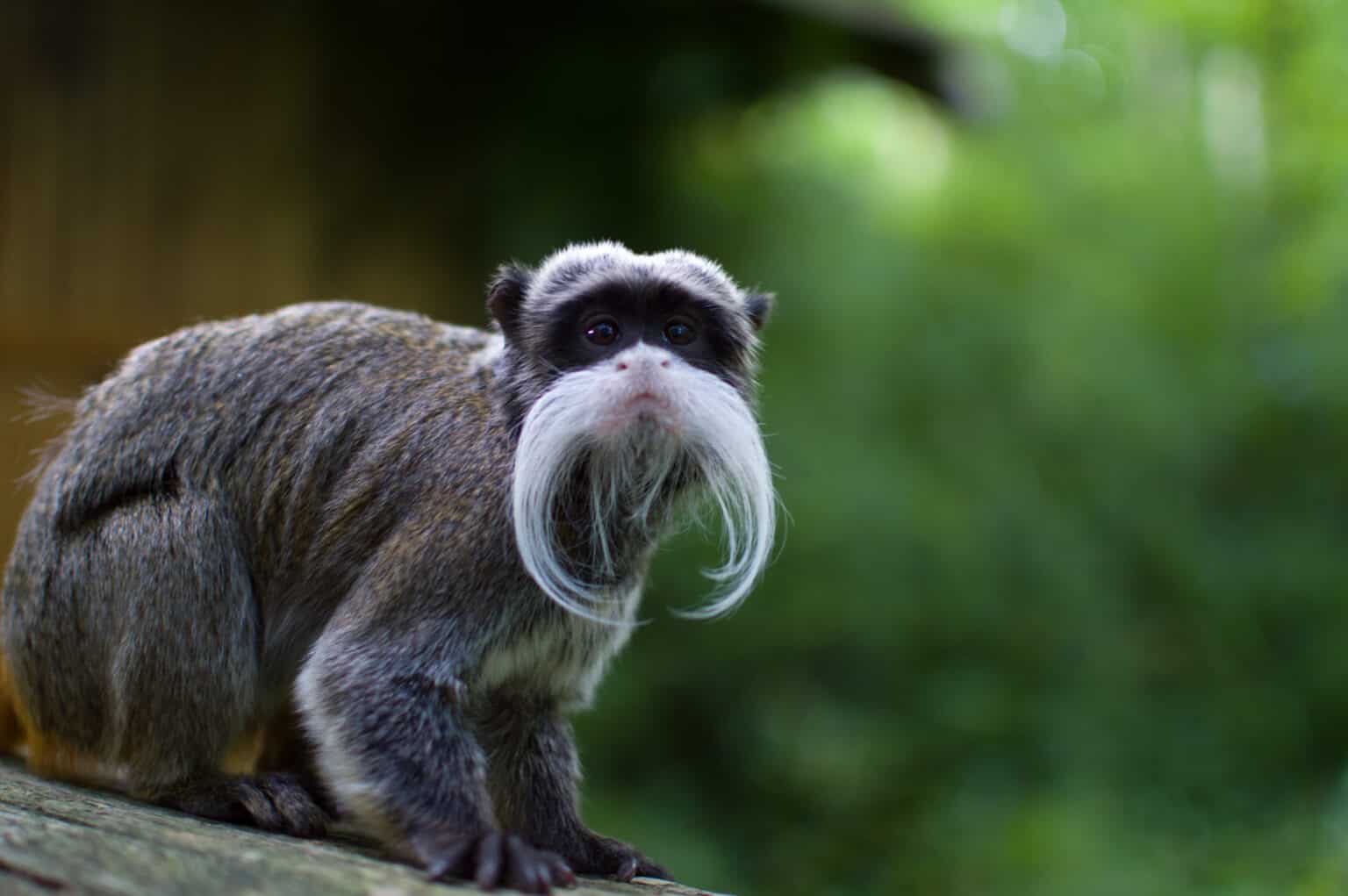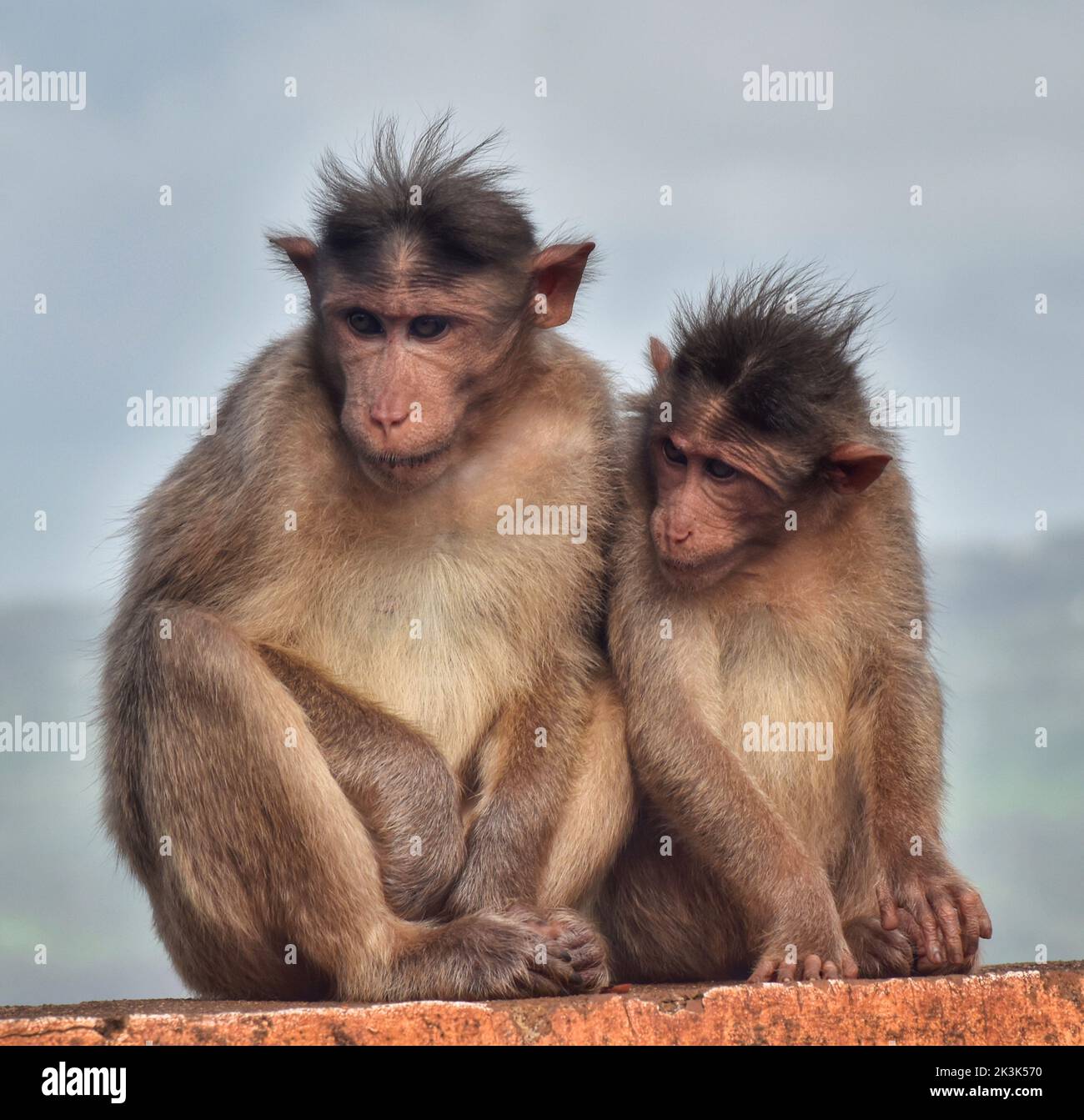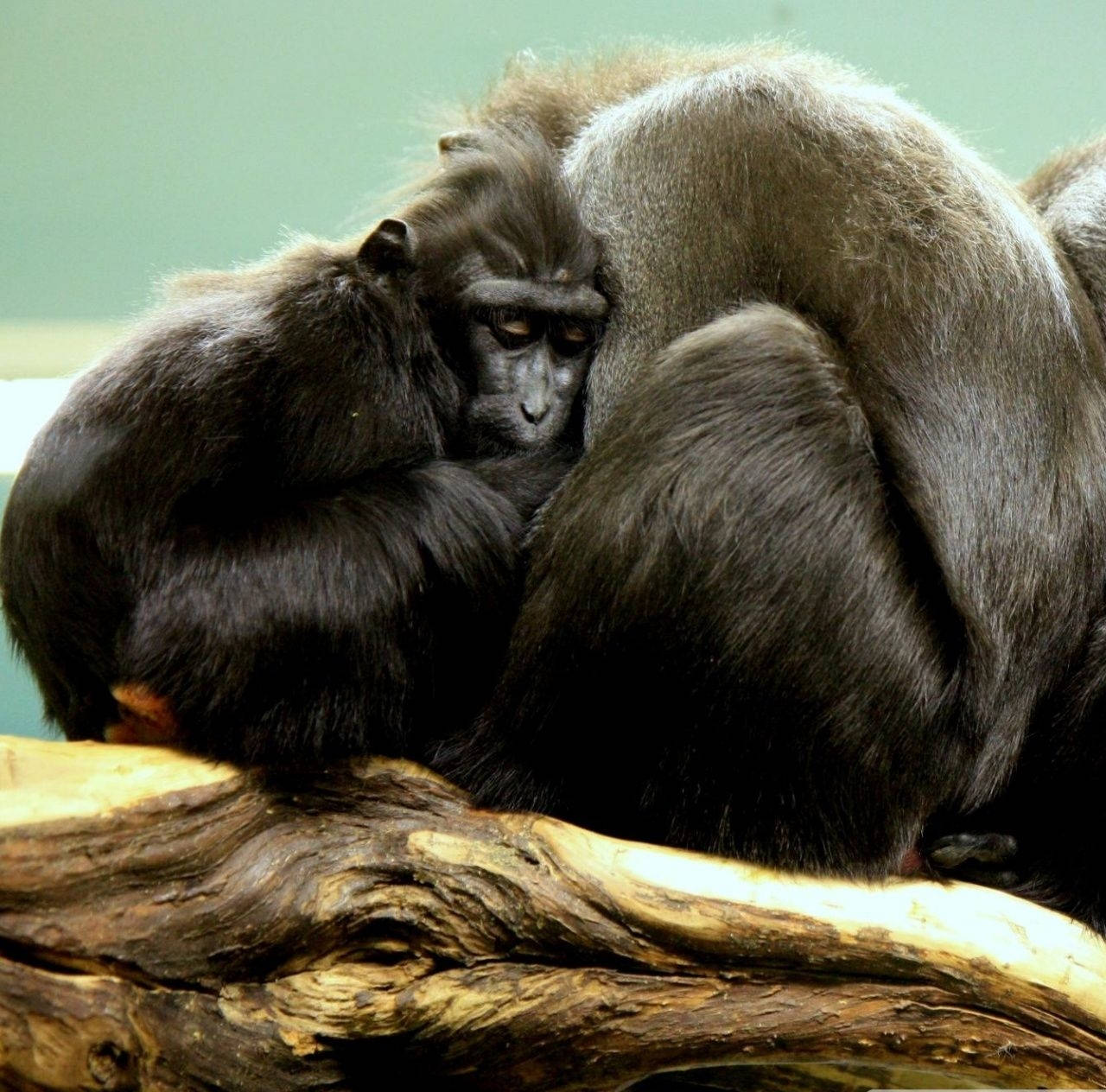Discover The Monkeys Members - A Primate Family Portrait
When you think about the animal kingdom, there are some creatures that really just capture your imagination, and the monkeys members are absolutely among them. They make up a truly vast collection of primate relatives, scattered across many parts of the globe, and honestly, their variety is something to behold. You see, these fascinating animals come in such an incredible range of shapes and sizes, from the very small, almost tiny marmosets that could fit in your hand, to the quite imposing and very colorful mandrills, which are rather big and powerful.
This amazing group of animals includes so many distinct families, different kinds, and unique sorts of creatures, each with its own way of living. We often picture them swinging through trees, and while many do, some actually spend their days on the ground, perhaps in open grassy areas. It's quite something to consider their sheer numbers and how widely they are distributed across our planet.
We are going to take a closer look at these captivating beings, exploring what makes them so special, where they live, and some of the truly interesting things they do. You might be surprised by some of the things you discover about these lively and often clever creatures, their skills, and what sets them apart from other animals, even those that seem quite similar.
- Exploring The Magic Of The James Taylor Tour
- Unveiling Ray Benzinos Net Worth A Journey Through His Life And Career
- Exploring The Timeless Appeal Of Keith Sweats Deep Is Your Love
- Exploring The Journey Of Jonathan Penner On Survivor
- David Draiman The Voice Of Disturbed
Table of Contents
- Who Are These Amazing Monkeys Members?
- What Makes a Monkey, Well, a Monkey?
- Do Monkeys Members Really Write Shakespeare?
- Where Do the Monkeys Members Call Home?
Who Are These Amazing Monkeys Members?
When we talk about monkeys, we are referring to a very broad collection of animals that are part of the primate order. They are, in a way, one of the most intriguing and varied groups of living things we have on Earth. There are roughly 200 distinct kinds scattered all over the globe, and each one, you know, has its own special charm. They genuinely grab our attention with their lively actions and often very expressive faces. It's truly a pleasure to watch them.
This big family of creatures includes so many different sorts. Some are tiny, like the pygmy marmoset, which is really small, barely bigger than a human thumb. Others are quite large, such as the mandrill, with its striking facial colors and a rather robust build. The sheer number of different kinds of monkeys is quite something to think about, and it shows just how adaptable these animals can be to various environments. We often see pictures of them in their natural settings, perhaps sitting on a branch or moving through the green leaves of a forest, which is pretty cool.
A World of Different Monkeys Members
The term "monkey" itself is a rather general name that people use for most mammals that belong to a particular infraorder called Simiiformes. These are also often called simians. Traditionally, you see, all the animals within this group were considered monkeys. This means that when we talk about the monkeys members, we are talking about a huge family tree of animals, some of whom share very close ties with us humans and also with apes. It's a bit like a big extended family, actually, with many different branches.
- Kenny Johnson The Versatile Talent Of The Entertainment Industry
- What Happened To The Cast Of Everybody Loves Raymond Now
- Unveiling The Mystery Of Hailee Steinfelds Boyfriend
- Discovering The Cool Vibes Of Icy Melon Edison
- Discovering The Unique Appeal Of Killian Scotts Eyebrow
There are, in fact, two main types of monkeys that people often talk about. You have what are known as Old World monkeys, and then there are New World monkeys. These names refer to the parts of the world where they naturally live. Old World monkeys are found in Africa and Asia, while New World monkeys are native to Central and South America. They have some distinct differences in their physical traits and how they live their lives, which is quite interesting to learn about. For example, some New World monkeys have tails that can grip things, a bit like an extra hand, which is not something you see in Old World monkeys.
What Makes a Monkey, Well, a Monkey?
So, what exactly sets a monkey apart from other animals, especially their close relatives like apes? Well, monkeys are a collection of mammals that are part of the primate order, just like humans are. They typically have some very recognizable features. For instance, they are usually known for their long limbs, which are very helpful for moving about, and also for their tails. These tails are often quite long and, in many cases, are used to help them keep their balance as they move through the trees. It's almost like a built-in balancing pole, you know.
The presence of a tail, even if it's just a very small stump, is one of the key things that helps distinguish monkeys from apes. Apes, like chimpanzees, gorillas, and orangutans, do not have tails. This is a pretty straightforward way to tell them apart, in some respects. While many different kinds of creatures, including chimpanzees and lemurs, are also primates, they are not classified as monkeys. It's a bit of a nuanced distinction, but it's important for understanding the different groups within the primate family.
The Tails and Traits of Monkeys Members
Most monkeys, as we've talked about, are known for having a tail. This tail, as I was saying, helps them balance, especially when they are swinging from branch to branch high up in the forest canopy. It's quite a sight to see them move with such agility. Their long limbs are also perfectly suited for this kind of movement, allowing them to grasp branches and swing with surprising speed and grace. This ability to move through trees is a big part of their daily existence for many species, actually.
Beyond their physical attributes, monkeys also show a range of fascinating skills and abilities. You can often watch them demonstrating their cleverness, perhaps figuring out how to get to a difficult-to-reach piece of food or using simple tools. They are, in many ways, quite intelligent creatures. We can learn a lot by simply observing their behaviors in the wild. For example, some monkeys have developed very complex social structures within their groups, which is pretty neat to think about. They communicate with each other using a variety of sounds and body language, which is quite sophisticated.
Do Monkeys Members Really Write Shakespeare?
You might have heard of something called the "infinite monkey theorem." This idea suggests that if you gave monkeys enough time, they could, just by randomly hitting keys on a typewriter, eventually produce the complete works of Shakespeare. It's a fun thought experiment, but is it really true in a practical sense? Well, it's more of a theoretical concept about probability than something that would actually happen in real life. The amount of time required would be, you know, truly astronomical, far beyond anything we can imagine. So, while it's a clever idea, it's not something you'd expect to see in a zoo anytime soon.
However, this thought experiment does highlight the idea of monkeys having some level of intelligence and the capacity for complex actions, even if it's by pure chance in the theorem's case. In reality, monkeys show intelligence in many ways. They learn, they adapt, and they solve problems. This is very different from just randomly typing, of course. For instance, some species are known for their ability to use tools or to figure out intricate puzzles to get food. They are, basically, very good at figuring things out in their own environments.
Curious Behaviors of Monkeys Members
Beyond theoretical musings, the actual behaviors of monkeys members can be quite surprising, and sometimes, a little unsettling. For example, young male capuchins, a type of New World monkey, have developed a rather strange habit of acquiring baby howler monkeys. This is a trend that, sadly, does not usually end well for the little howler monkeys. It's a curious and somewhat perplexing behavior that scientists are still trying to fully understand, showing that animal behavior can be complex and sometimes defy easy explanation.
Another interesting area of study involves how close rhesus monkeys are to humans in terms of evolution. They are further away from us on the evolutionary tree compared to chimpanzees, for instance. Studying rhesus monkeys can help us better see what truly makes humans different from other apes. Chimps, you see, are so genetically similar to us that it can sometimes be harder to pinpoint those unique human traits. By looking at a species that's a bit more distant, we get a clearer picture of what makes our own species distinct, which is really quite fascinating.
Where Do the Monkeys Members Call Home?
Monkeys are primates that are found across a wide range of species throughout much of the tropical parts of the world. Their natural living places are incredibly diverse. You can find them in the dense, humid rainforests, where they spend most of their lives up in the trees, moving through the canopy. But then again, some types of monkeys have adapted to live in very different surroundings. For example, while many are mostly tree-dwelling, some actually live on land, often in the open, grassy areas known as savannas. This shows how adaptable these creatures are, honestly.
Their ability to live in such varied environments, from high in the trees to walking on the ground, speaks to their resilience. However, despite their incredible variety and widespread presence, most of them are facing difficulties. A significant number of monkey species are currently under threat from human activities. Things like people building new homes, clearing forests for farming, or other kinds of development often reduce or destroy the places where monkeys live. This is a serious concern for the future of these amazing animals, and it's something we should all be aware of.
Habitats of the Monkeys Members
To give you a better idea of just how varied their homes can be, we can look at some specific examples. There are, for instance, nearly 200 species of tailed primates, excluding lemurs, tarsiers, and lorises, which are different kinds of primates. Each of these species has its own preferred type of habitat. Some need the very specific conditions of a primary rainforest, while others can thrive in more disturbed areas or even near human settlements, in some cases. It's a testament to their ability to find a way to live in many different settings.
In this general overview, we've only touched on a few ideas about the many different kinds of monkeys members. There are so many interesting facts about where primates first came from, what they eat, and whether they have thumbs that work like ours. For example, some monkeys do have thumbs that can grasp things, making it easier for them to hold food or climb. This guide aims to just give you a taste of the incredible world of monkeys, highlighting some of their distinctive characteristics and the places they naturally live. They truly are a captivating part of our planet's living tapestry.
- Discovering The Cool Vibes Of Icy Melon Edison
- Unveiling The Life Of Mike Bibbys Wife A Journey Of Love And Support
- Discovering Joao Below Deck A Journey Through His Life And Career
- Unraveling The Legacy Of Dr Yang In Greys Anatomy
- Unveiling The Life Of Arbaaz Khan The Journey Begins

10 Incredible Monkey Facts - A-Z Animals

Caring monkey hi-res stock photography and images - Alamy

Download Black Monkey Hugging Group Of Monkeys Wallpaper | Wallpapers.com